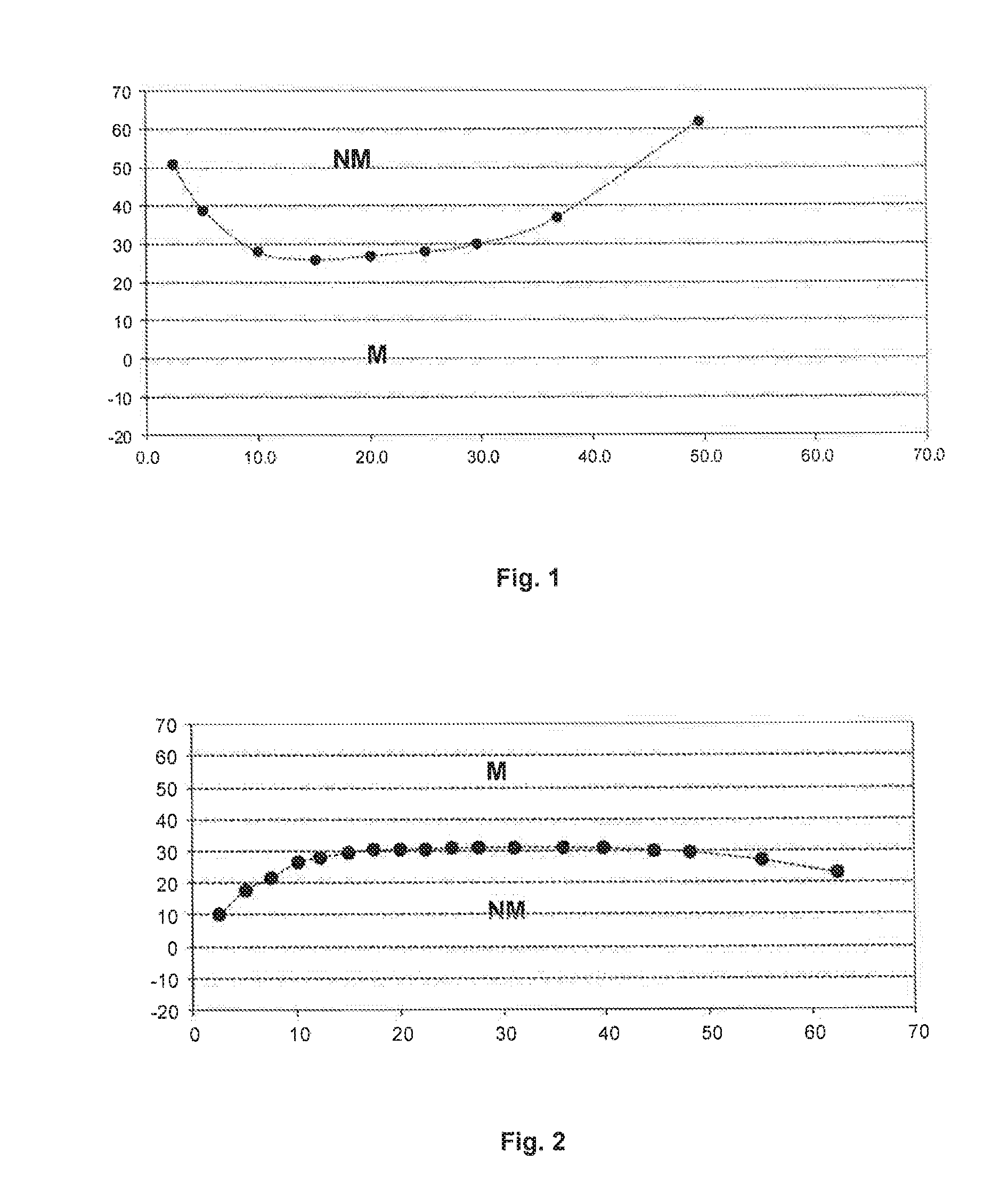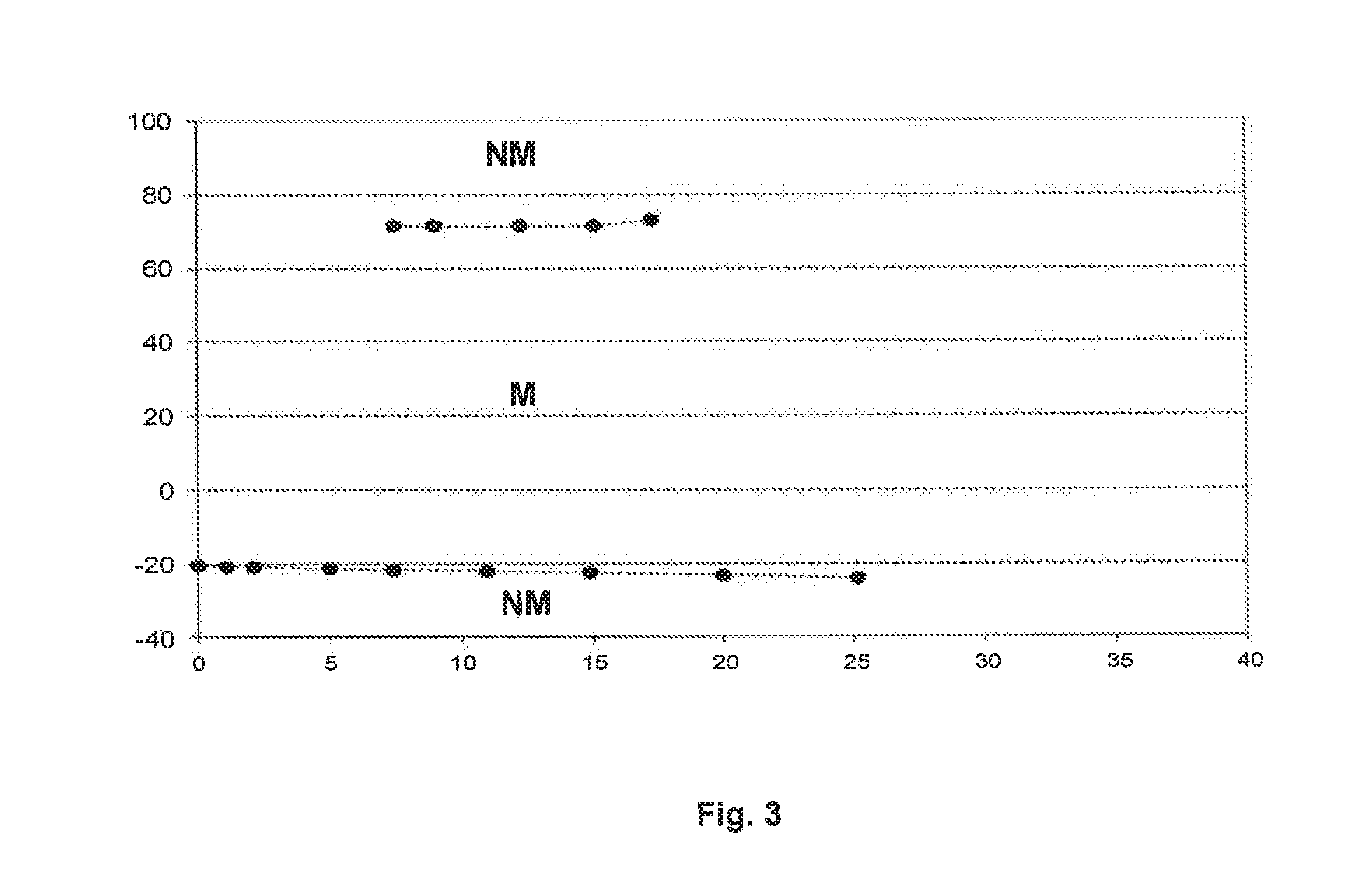Heat transfer compositions of improved miscibility with lubricant oil
- Summary
- Abstract
- Description
- Claims
- Application Information
AI Technical Summary
Benefits of technology
Problems solved by technology
Method used
Image
Examples
example
[0133]The example that follows illustrates the invention without limiting it.
[0134]In this example, the miscibility of HFO-1234yf, ammonia and of the azeotropic mixture of HFO-1234yf and ammonia with a lubricant oil of polyalkylene glycol type (PAG) ND8 is studied.
[0135]An autoclave is placed in a glass tank, fed with a thermostatically maintained bath of water or of glycol-water according to the test temperatures, of from −30° C. to +80° C.
[0136]For each experiment, the heat-transfer fluid is introduced into the autoclave. Next, a defined first amount of lubricant oil is added, and the mixture is stirred. The temperature in the autoclave is raised until an emulsion is obtained, indicating the non-miscibility of the mixture. Next, the mixture is cooled, a further amount of oil is introduced into the mixture, and the process is repeated.
[0137]This procedure makes it possible to plot, for each transfer fluid, a curve displaying the non-miscibility zone of the mixture with the oil PAG,...
PUM
 Login to View More
Login to View More Abstract
Description
Claims
Application Information
 Login to View More
Login to View More - R&D
- Intellectual Property
- Life Sciences
- Materials
- Tech Scout
- Unparalleled Data Quality
- Higher Quality Content
- 60% Fewer Hallucinations
Browse by: Latest US Patents, China's latest patents, Technical Efficacy Thesaurus, Application Domain, Technology Topic, Popular Technical Reports.
© 2025 PatSnap. All rights reserved.Legal|Privacy policy|Modern Slavery Act Transparency Statement|Sitemap|About US| Contact US: help@patsnap.com



